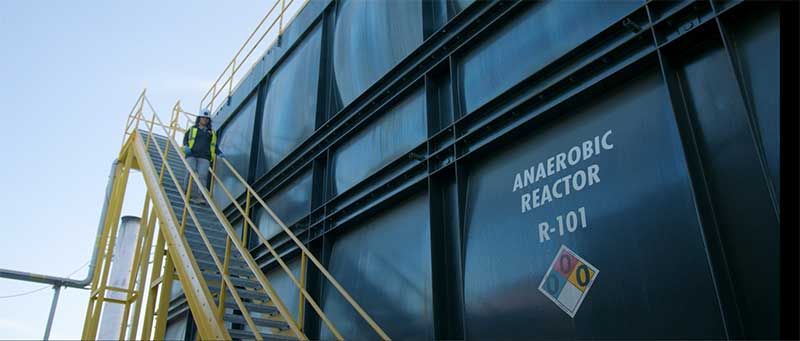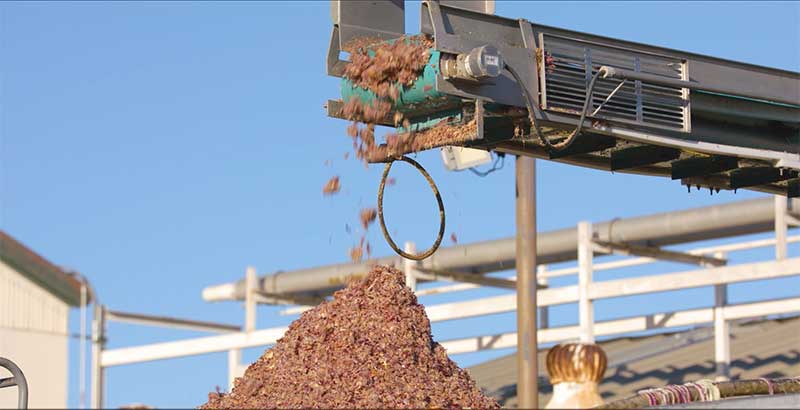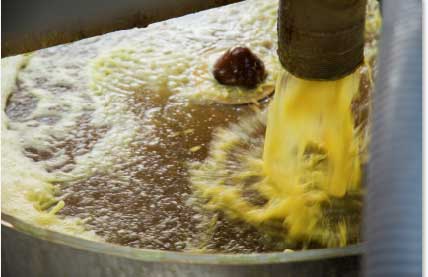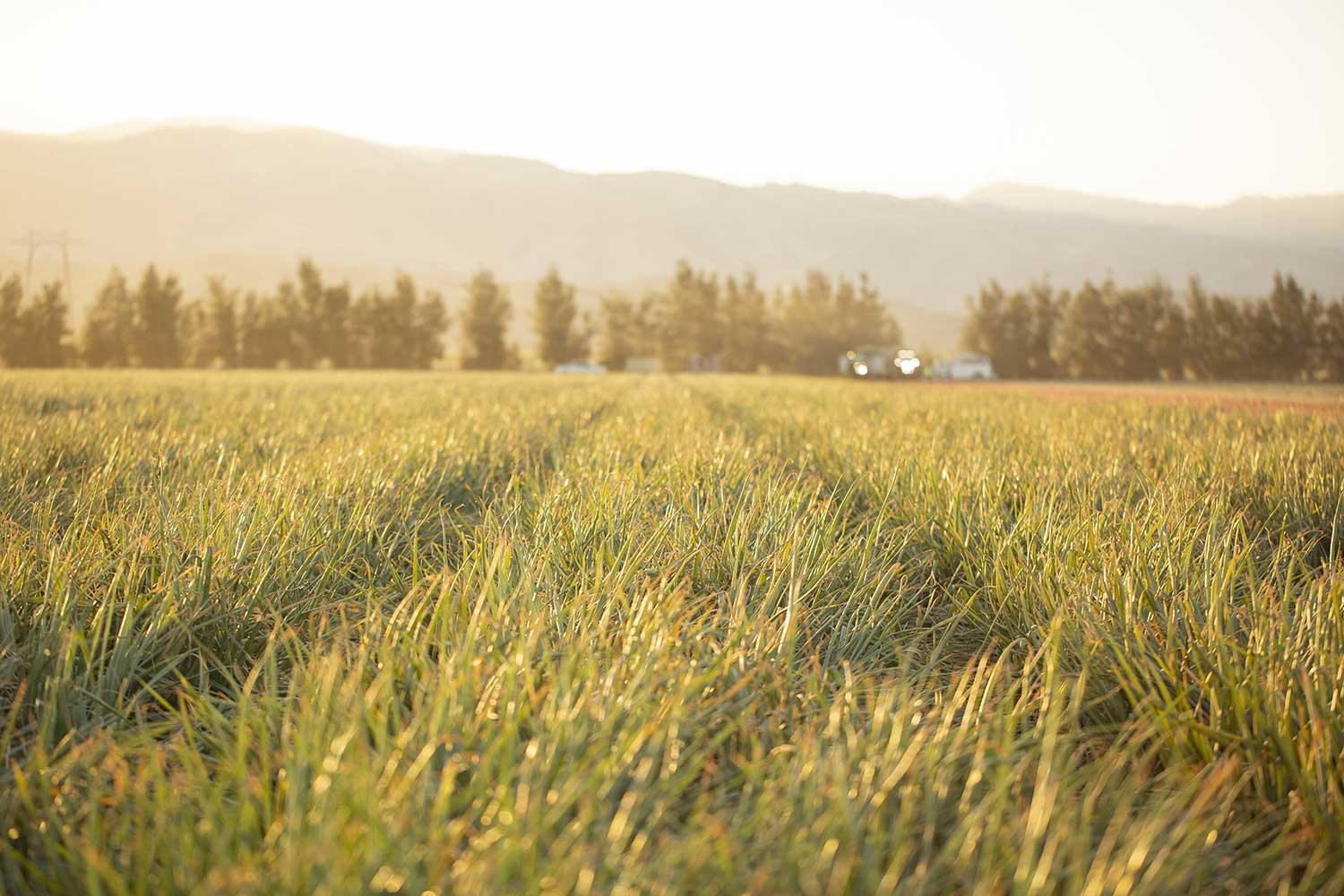While precut onions can save the consumer a lot of time (and tears) in the kitchen, large-scale processing results in significant waste — as could also be found in a home or commercial kitchen. To combat that waste, Gill’s Onions designed a system that underpins their zero waste goals and transforms the otherwise unusable onion remains into clean, usable energy.
Founded in 1983 in Oxnard, California, by fourth-generation farmers Steve and David Gill, Gill’s Onions strives to be an environmentally conscious pioneer in the fresh produce industry. From a simple request for pre-cut fresh onions, they have grown their business into one of the largest family-owned, year-round onion processing operations in the world.
UN Goals:
6 – Clean Water and Sanitation
7 – Affordable and Clean Energy
9 – Industry, Innovation and Infrastructure
12 – Responsible Consumption and Production
13 – Climate Action
They take a hands-on approach to seed selection, ensuring the longest shelf life possible, as well as to the planting and fertilizing schedules that ensure the best crops with the highest yield. They are dedicated to providing the highest quality onions with the lowest environmental impact and are committed to their core values—innovation, conservation, sustainability, and safety.
In 2009, Gills Onions was the first food-processing facility in the world to produce ultra-clean energy from onion waste, winning them the prestigious ACEC Engineering Excellence Award.
The challenge:
What to do with all that waste?
The process begins with harvesting the onions, then transporting the crop to the processing plant where they are cooled to between 34–38 degrees. They are then cored and peeled, and the ends are cut in preparation for further processing (i.e., chopping, pureeing, slicing, pickling, etc.). This can result in a yield loss of almost 40% of the onion, which then becomes waste. Their 100,000-square-foot plant can process millions of pounds of raw onions per week, creating an average of 150 tons
of unusable onion waste. It became evident early on that waste was going to be an issue.
In an attempt to mitigate the waste factor, they began loading the unusable onion remains into trucks to be transported to one of their nearby farms, where it was worked back into the soil; however, this practice was neither truly sustainable nor economical. Not only was the transportation process labor intensive and expensive due to the high cost of hauling the waste—approximately $400,000 annually—and adding to their carbon footprint but it also proved to be problematic for soil conditions in the field. Land application of onion waste can lead to various negative effects, including offensive odors in the fields, soil acidification, reduced yields of other crops, pests, and potential groundwater contamination.
In addition to their waste concerns was the high cost of electricity as well as potential rate hikes and electricity blackouts (a series of which had jeopardized the extensive refrigeration required to process and protect its fresh-cut onions in the past).
So, how could they put that waste to good use and save on the high cost of powering their business?
The solution:
Symbiotic waste-powered energy aka onion power
At Gills Onions, sustainability means taking full responsibility for identifying reduction and diversion opportunities for all the materials they produce, consume, and emit on-site based on the three pillars of their sustainability program: zero waste, resource efficiency, and onion power. To Gill’s, these are not separate endeavors but symbiotically relational to one another.
So, what to do with all that waste? Onion Power.

Through a multi-year research and design process, Gill’s Onions collaborated with the University of California, Davis, to determine if the sugar content of onions was feasible for methane-producing microbes. Once affirmed, Gill’s hired a chemical engineering and energy consulting firm, which convened a team of engineers and contractors to develop an efficient waste-to-energy system, which they called an Advanced Energy Recovery System (AERS).
Up to that point, no one had used microorganisms to generate biogas from onion waste, and due to the nature of the AERS, the use of many different technologies, and the conversion risk factors, stakeholder education was an important component at the beginning stages of the process.
Process Overview
The AERS separates the onion waste into liquid (OJ or onion juice) and solid (onion cake). The award-winning system converts the onion juice into methane-rich biogas that can be used in a similar way as natural gas while also significantly cleaning the wastewater from the processing operation.
The tops, tails, peels, and outer layers removed during the peeling process are conveyed to equipment where lime is added to maximize extraction of onion juice, and the remains are then ground and pressed, separating the juice from the solids (yielding approximately 75 percent of the total waste). The extraction process not only lowers the overall mass of the waste produced by the plant but also provides additional revenue as the cake (the leftover solids) is sold as high-value cattle feed.

The juice flows to the 145,000-gallon anaerobic reactor’s equalization tank to ensure a continuous flow of output. The onion juice is then pumped into a rapid mix tank, where it combines with equalized water that dilutes the juice and conditions it for efficient anaerobic digestion by increasing the temperature and pH. Micronutrients are added to the mixture to aid digestion. A heating recirculation loop is used to maintain the mesophilic condition of between 89.6 to 98.6 degrees Fahrenheit (32 to 37 degrees Celsius), heating the juice with a boiler and a heat exchanger loop.
The mixture is then pumped from the rapid mix tank into a static mixer, where micronutrients are added, before it goes into the system’s upflow anaerobic sludge blanket (UASB) reactor, also called the digester.
Microorganisms (bacteria that resemble caviar) are added to the UASB to facilitate the breakdown by feeding on the sugars in the onion juice mixture. As the mixture is converted, aggregations of bacteria cover the surface area, forming a bed of small sludge granules that suspends in the tank.
A feed distribution-piping system distributes the feed across the bottom of the digester. The feed then flows upward through the digester, distributing the conditioned onion juice up through the bed, resulting in the conversion of the juice mixture into methane, carbon dioxide, and new biomass. The hydraulic retention time, or conversion time, is around 24 hours.
 Once the process is complete, the bacteria sink back down to the bottom of the tank. The juice mixture flows over small barriers and into a trough system and combines in a settler drop box, then flows into a standpipe (a high vertical pipe or reservoir that is used to secure a uniform pressure) to an anaerobic effluent composite sampler, where samples are collected to determine quality.
Once the process is complete, the bacteria sink back down to the bottom of the tank. The juice mixture flows over small barriers and into a trough system and combines in a settler drop box, then flows into a standpipe (a high vertical pipe or reservoir that is used to secure a uniform pressure) to an anaerobic effluent composite sampler, where samples are collected to determine quality.
“The beautiful thing about onion juice is that it produces a lot of biogas. We're seeing that between 70 and 90% of the biogas is methane,” says Laura Hamman, Sustainability Manager at Gill’s Onions.
Following conversion, the biogas contains approximately 15% CO2, in addition to mercaptans (organosulfur molecules composed of carbon, hydrogen, and sulfur) and hydrogen sulfide. Because of the high sulfur content (which is part of the smell and the tear-inducing effect), further conditioning is necessary. Vent gases from the equalization tank, rapid mix tank, digester and standpipe are collected by way of a vent air blower and purified, dehumidified and compressed to make the biogas suitable for use. It is then directed through a piping system that is much like a home natural gas system and can be used to power the processing plant. Any excess gas is flared (burned off).
An added benefit of the AERS is that it serves as wastewater treatment as an innate part of the conversion process. In California, to discharge wastewater into the city sewer system, certain criteria (Biological Oxygen Demand [BOD] and Total Suspended Solids [TSS], among others) must be met. By the end of the conversion process, the treatment has cleaned the water sufficiently enough that the discharge criteria are met.
The takeaway:
Since becoming operational in 2009, Gill’s waste-to-energy system produced enough to power 3,740 California homes for an entire year. Today, the AERS continues to afford multiple benefits, like generating methane-rich biogas, providing effective wastewater treatment, helping the company toward its zero-waste goal, and lowering the overall footprint of the operation.
Fifteen years ago, when this project launched, it cost upwards of $10.8 million and was paid back within five years. Savings included $400,000 annually from eliminating waste hauling, $700,000 annually in deferred electricity costs and $2.7 million in incentives for the project from Southern California Gas Company as part of the state’s Self-Generation Incentive Program, along with additional tax credits.
When the AERS project launched in 2009, Gill’s Onions diversion rate from landfill was 75%. As they continued to measure and take action to improve those measurements, their diversion rate has increased and is currently upwards of 90%...and they never stop measuring. The company is committed to continuing to look for opportunities to improve by measuring, assessing, and evaluating their processes and figuring out new ways to be more sustainable and efficient.
Gills’ Sustainability program continues to evolve, and its focus has shifted from generation to energy efficiency.
In 2019, Gill’s Onions expanded its commitment to green energy through the addition of a rooftop solar photovoltaic system sized at 472 kW. Coupled with their zero-waste initiative, this symbiotic process is a win-win.
In 2020, Gills embarked on an intensive Strategic Energy Management (SEM) program sponsored by Southern California Edison, through which it has been able to achieve a 21% reduction in annual energy consumption (nearly doubling the original goal of 12%).
“The AERS started us off on the right foot and gave us global recognition. It also provided a solid foundation for our sustainability program, which has matured and become part of the Gills’ ethos”, states Hamman. Energy Generation, Zero Waste, and Efficiency are more relevant than ever and inform the company’s decision-making process. “Witnessing the evolution of our sustainability journey and its impact is inspiring and rewarding.”
